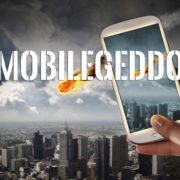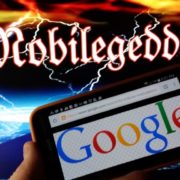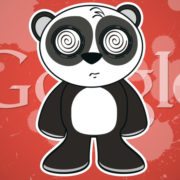ChatGPT-4: Is It a Game Changer for Digital Marketing?
Are you ready to discover the transformative impact of GPT-4 on digital marketing? Below we will explore the key differences between ChatGPT-3 and GPT-4 and how these advancements are revolutionizing the industry. We’ll also cover the system’s ongoing flaws and why it isn’t quite a replacement for humans – yet.
The AI revolution has been rapidly advancing. With each iteration, we see more powerful and sophisticated language models. The OpenAI team has surpassed themselves once again with the unveiling ChatGPT-4, the successor to GPT-3. This new model boasts remarkable improvements in understanding and generating human-like language.
While the new OpenAI system is smarter, it lacks one key difference, the system’s flaws remain the same.
In this blog, we will explore the key differences between the two models, their pros and cons, and delve into the impact GPT-4 has on the marketing landscape. Here’s what you need to know.
What is OpenAI?
In 2015, OpenAI was founded by a team of tech leaders as an AI research organization with a focus on creating and advocating for AI that is beneficial to humanity. The organization’s primary goal is to ensure that the progress made in artificial intelligence is in the best interest of society. OpenAI accomplishes this by developing AI models like the GPT series and collaborating with the research community to tackle the challenges and ethical considerations surrounding AI.
What is Chat GPT?
On Nov. 30, 2022, OpenAI created and released ChatGPT, an AI-powered language processing tool that allows for human-like conversations, answering questions, and assisting with various tasks such as writing blog posts and code. Within just 2 months of its launch, ChatGPT garnered over 100 million active users, surpassing the speed at which TikTok reached the same milestone by 9 months.
This speaks volumes to ChatGPT’s capability and impact. Furthermore, ChatGPT has continued to advance with the recent rollout of their new GPT-4 language model. Read on to learn more about these advancements.
Key Differences Between GPT-3 and GPT-4
On March 14th, OpenAI released their new image and text-understanding AI model, GPT-4. GPT-4 was created by building off of its predecessor, GPT-3. It pushes the boundaries of what is possible with AI language models. This new language model can generate text and images at a human level.
Some of the main differences include:
- Increased Model Size: GPT-4’s model size is significantly larger than GPT-3. It allows for even greater context understanding and more comprehensive language generation.
- Enhanced Fine-tuning: OpenAI has improved the fine-tuning capabilities of GPT-4, enabling users to customize the model to suit their specific needs more effectively.
- Better Language Understanding: GPT-4 exhibits improved comprehension of complex language patterns and better handling of ambiguous or unclear input, making it more versatile and user-friendly.
- More Languages Supported: GPT-4 supports an increased number of languages, empowering marketers to target a more diverse global audience.
GPT-4 is an impressive advancement in AI technology. Lets take a look at how it is impacting the landscape of digital marketing.
GPT-4’s Impact on Digital Marketing
GPT-4’s advancements have opened up new opportunities and revolutionized digital marketing. Here are some of the key areas where GPT-4 is making waves:
- Content Creation: With its enhanced language generation capabilities, GPT-4 can create high-quality content that is both engaging and relevant to audiences. This allows marketers to generate information for blog posts, social media updates, and email campaigns quickly and efficiently. However, it’s mainly used for information to include in blogs and social media due to its technical tone and language style, not to “copy and paste” the info altogether. The flaws from content creation in previous versions remain the same, so human input is a must (more on this below).
- Personalization: GPT-4’s improved fine-tuning capabilities enable digital marketers to tailor content and messaging to individual users, creating a more personalized and meaningful customer experience.
- Chatbots and Customer Support: GPT-4-powered chatbots have become more human-like, capable of understanding complex queries and providing accurate responses. This has led to better customer support experiences and improved customer satisfaction.
- Multilingual Marketing: With support for more languages, GPT-4 allows digital marketers to create content and communicate with audiences across the globe, helping businesses expand their reach and appeal to international markets.
- SEO Optimization: GPT-4 can assist in optimizing website content for search engines, ensuring better visibility and higher rankings in search results
Embracing the Change
GPT-4 has proven to be a game changer for digital marketing. It has enabled marketers to create targeted, personalized, and engaging campaigns. This being said, it is important for people to use AI-powered tools responsibly. This will ensure that the content aligns with brand values and messaging. More importantly, that ethical considerations are taken into account.
Limitations of ChatGPT
Before you hang your work coat up thinking robots are taking your jobs, the human touch is needed. When it comes to customization for individual businesses, the same loopholes begin to appear.
- ChatGPT (all versions) don’t know events past 2021: Probably the most significant drawback is incorrect data. This is due to the fact the AI system was only programmed up to 2021. As such, “facts” and statistics are not up to date. Similarly, despite its capabilities, GPT-4 has similar limitations as earlier GPT models. “Most importantly, it still is not fully reliable (it “hallucinates” facts and makes reasoning errors),” said the company.
- ChatGPT Can Provide Wrong Answers: In a few instances that we see, ChatGPT was unable to deliver accurate responses to the queries, which restricted its ability to be used. It can’t interpret and adjust to unique queries, giving out incorrect and irrelevant text. It can be dangerous to use or trust this AI model at times because it cannot always be depended upon to provide accurate findings.
- ChatGPT Has Machine language: In order to identify machine-generated content, researchers have identified features that make it sound unnatural. The difficulty AI has with idioms is one of these peculiarities. This peculiarity in machine-generated content is one of the problems with ChatGPT.
- ChatGPT is not a Human Expert: How Close is ChatGPT to Human Experts? A research article claims understanding indirect meaning in human communication sometimes necessitates changing the topic at hand. Because ChatGPT takes things too literally, the AI occasionally misses the mark with its responses by failing to consider the original question.ChatGPT isn’t always available: The sheer volume of traffic bombarding the system means it cannot keep up with demand, and users find themselves waiting for days to utilize its services.
We’re living in exciting times as AI technology continues to evolve, and while the possibilities are endless, we must remain vigilant to its capabilities and reliability.
Final Thoughts
The introduction of GPT-4 has revolutionized digital marketing, offering unparalleled language generation and understanding capabilities. However, while this version of OpenAI’s system is smarter than its previous versions, it still won’t fix it’s ongoing flaws. This is why, as of now, it cannot be relied upon fully for information and the human touch is most definitively needed for all digital marketers.
At Onimod Global, we can help you harness the power of GTP-4 and other cutting-edge technologies to drive your digital marketing success. Our team of experts will work closely with you to develop tailored, data-driven strategies that align with your brand values.
Contact us today and see how we can elevate your marketing efforts to new heights.










